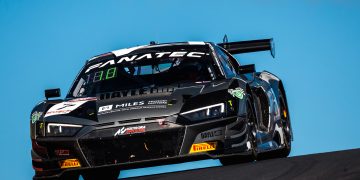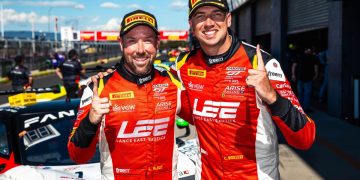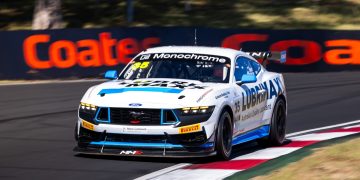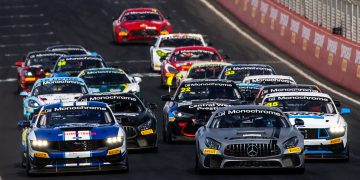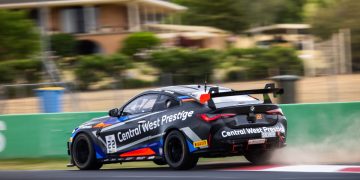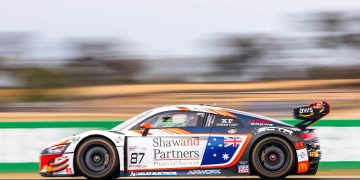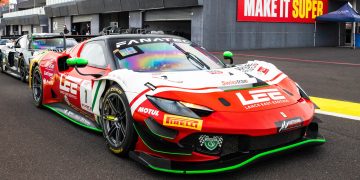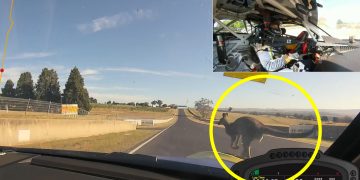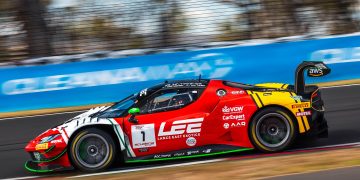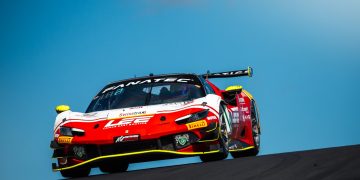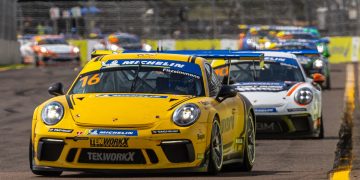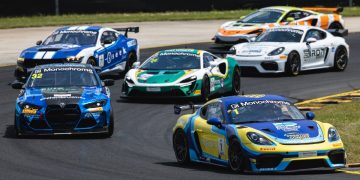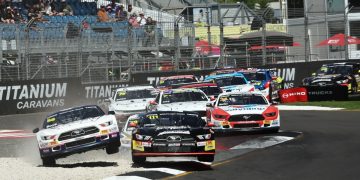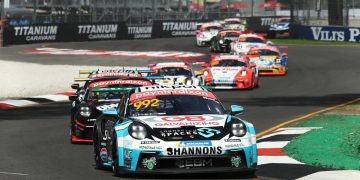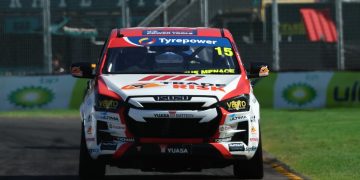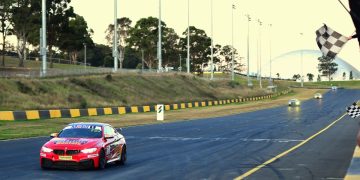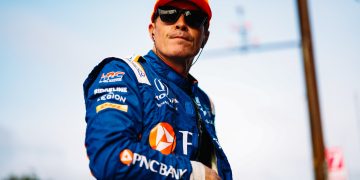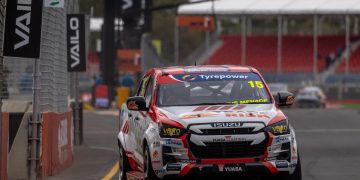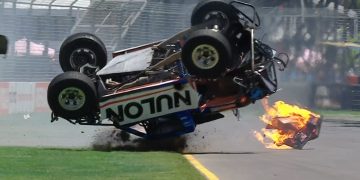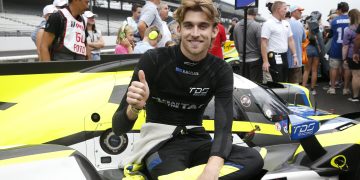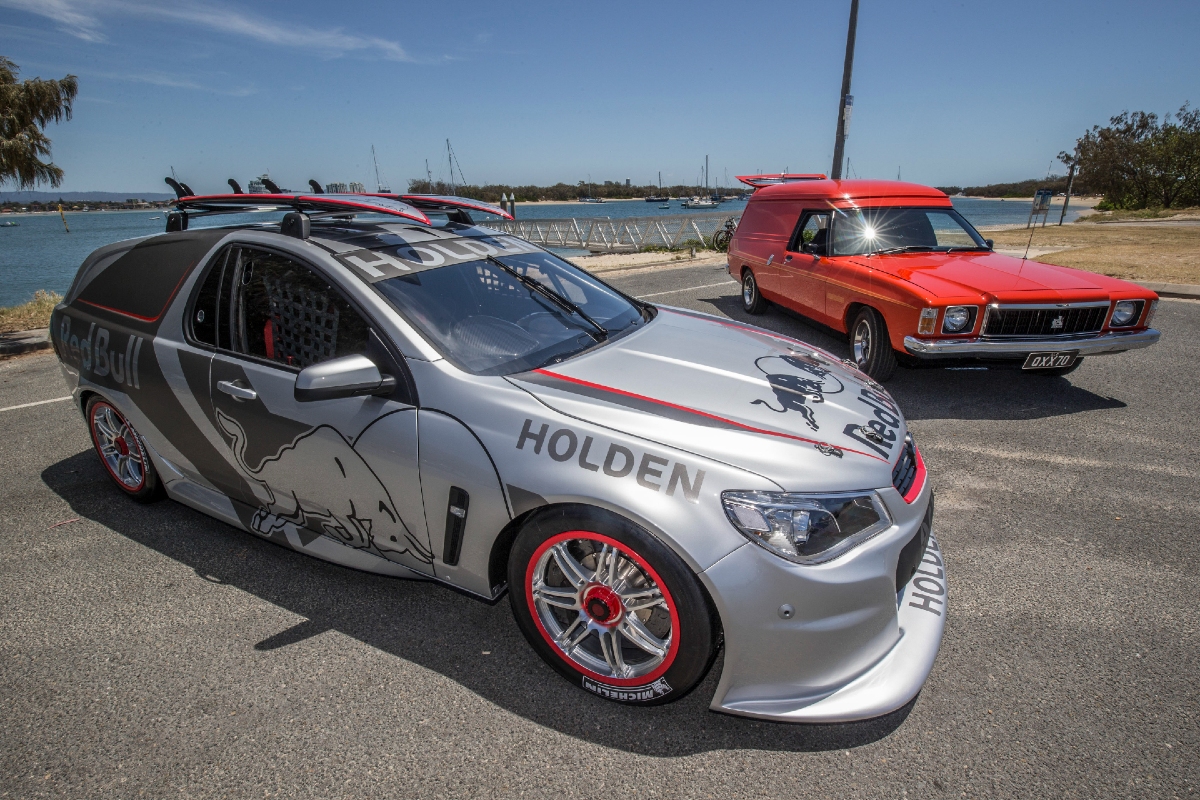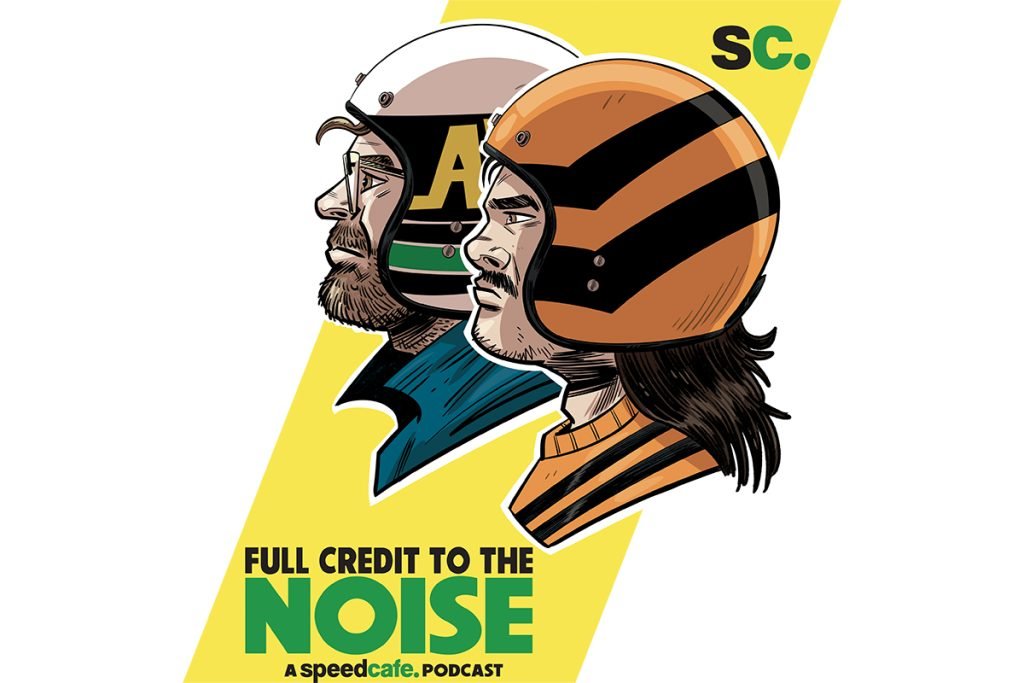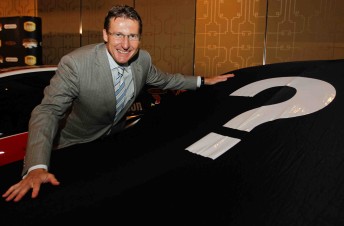
Details of the much-anticipated Car of the Future blueprint was released to the public today, specifying new control parts, the future direction of the sport and the pathway for more manufacturers to join the V8 Supercars Championship Series in the coming years.
The 18 month project, headed by five-times Bathurst 1000 winner Mark Skaife, was presented to the country’s media, car manufacturers, business leaders, Government representatives, motorsport heavyweights and industry insiders at Crown Casino, Melbourne.
In terms of car maker representation, Holden, Ford, Nissan and Chrysler were present at the announcement.
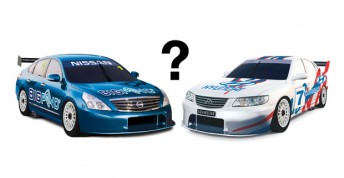
A graphic was used of a Nissan Maxima and Hyundai Grandeur as examples of future manufacturer representation in the sport.
The key points revealed today were based around the V8 Supercars’ DNA, with a heavy emphasis on evolution rather than mechanical revolution. Cost saving, increased safety, a wider scope for the inclusion of different engine configurations and continued parity between current and potential new manufacturers were just some of the key points highlighted in the one-hour presentation.
Skaife, an independent member on the V8 Supercars Australia Board, said that the footprints already laid since the start of the ‘Supercar’ era in 1993 is a great basis to build from.
“In essence, we need to protect the DNA of the current competition that has operated successfully for 17 years, as well as expanding horizons in a changing industry landscape,” Skaife said.
“This means redefining regulations to promote what we believe is Australia’s greatest motorsport category in ensuring that our drivers and teams continue to excel and provide a competitive and entertaining Championship Series.
“Our open shop-front policy will be based on potentially attracting additional manufacturers. We want to open the door to genuine high volume production, four-door sedans which will be configured as V8 rear wheel drive race cars under strict parity arrangements to compete equally against Falcons and Commodores.
“Any V8 engine can potentially be used where a manufacturer can modify one of its family V8 power-plants or utilise an existing category V8 Supercar engine. Who knows, this may open the door to teams fielding Nissans, Toyotas, Hyundais, Mazdas … whatever!”
Skaife’s Car of the Future plan uses all of the basic Project Blueprint parity system that was designed to maintain equality amongst the current Ford and Holden-based Series. This format will be retained, enabling numerous other manufacturers to consider using the V8 Supercar Championship Series as a racing and marketing platform.
“This is evolution, not revolution,” Skaife said.
“Parity is something we are very good at in V8 land to ensure technical equivalency between vehicles and it has not been an issue with our Ford and Holden teams. The 888 team’s successful switch between makes from last year to this year with minimum fuss is a classic example.
“Cost containment is also a vital aspect in ensuring the future health of our sport, as it has been for all categories, particularly NASCAR and Formula One in recent times. We now have in place a plan to reduce the cost of a rolling chassis by around 25% and further control costs of vehicle running, repair and engine development.
“Everybody knows that motor sport is an expensive business but we can’t afford to price ourselves out of our own market. The nature of motorsport has long been that if the money is there it can, and will, be spent. Controlling those costs is a critical path forward.
“As such, a comprehensive component evaluation matrix has been formulated for implementation over specific target dates. We have applied a proper business case analysis in an effort to curb dollars spent, as the cost of winning a Championship has roughly doubled in the last 15 years.
“The big picture here is that we already have a very successful sporting product that nonetheless must make headway in the future by remaining relevant to stakeholders, the car industry, team sponsors and our legion of fans – as well as do what we do best, put on a great show for the fans and our worldwide viewers.”
The top-line prerequisites of the Car of the Future are:
– Adopting an evolution not revolution approach
– Maintaining the DNA and the authenticity of the manufacturers and their models
– Maintain parity across and aerodynamic efficiency across all models
– Staying in line with the competing manufacturer’s planning
– Ensuring stakeholder viability in the long term, particularly the competing teams
– The car has a V8 power plant, four doors and rear wheel drive
– Cost to produce the car is reduced to $250,000
– Repair costs are dramatically reduced
– Running costs are reduced.
Long-term success is also achieved through agreed cost reduction including:
– Reducing the cost to run on a per kilometre basis
– An additional common ‘category’ engine available to teams and new manufacturers outside of the current Ford and Holden engines
– Control by specification and/or control parts to reduce component costs
– Process driven rule changes
– Strong rules to govern development.
The Car of the Future plan has been rubber stamped by all teams and the V8 Supercars Australia Board.
The Car of the Future will include the Project Blueprint control floor plan for each manufacturer, shifting the fuel tank from the boot of the car to in front of the rear axle for improved safety, and critically, maintaining the exterior panels of the particular make and a common 18 inch wheel diameter.
The majority of the component changes will be introduced either by or in 2012.
An outline of the primary targeted areas is:
Chassis: Control floor plan, and roll cage with minor variation to accommodate various bodywork. Easier to produce, flat pack kit form, serviceable.
Engine: Engines must be normally aspirated and of a V8 configuration. V8SA are currently finalising the details of an Engine Equalisation Program for any variant from respective manufacturers that could co-exist with the current V8 Ford and Holden powerplants.
Suspension & Steering: Control Independent rear suspension and uprights. Front suspension and steering generally unchanged from Project Blueprint.
Gearbox & Drivetrain: Holinger mid mounted gearbox unchanged. Rear differential spec TBA – testing a possible move from spool to Detroit locker.
Wheels and Tyres: Control 18”x11” Wheel. Control Tyre 295mm x 680mm R18.
Brakes: Control Package – final specifications TBA.
Cooling: Control Specification and location.
Fuel system: Control Fuel System, tank located forward of the rear axle. E85 Fuel.
Electrics/Electronics: Control Chassis loom and Control Engine looms. New Control ECU and Logger. ECU features to make reduce fuel consumption during pitstops and yellow flag, in line with new technology in road cars.
Aero/Bodywork: Body work must be substantially representative of the production car model. Maintain aero parity, introduction of bio composites.
Safety: Removal of glass, polycarbonate windscreens, fire resistant coatings on selected composites items, Improved Driver seat & position, working with FIA. Target vehicle mass 1200/1250kg.

 Shop
Shop